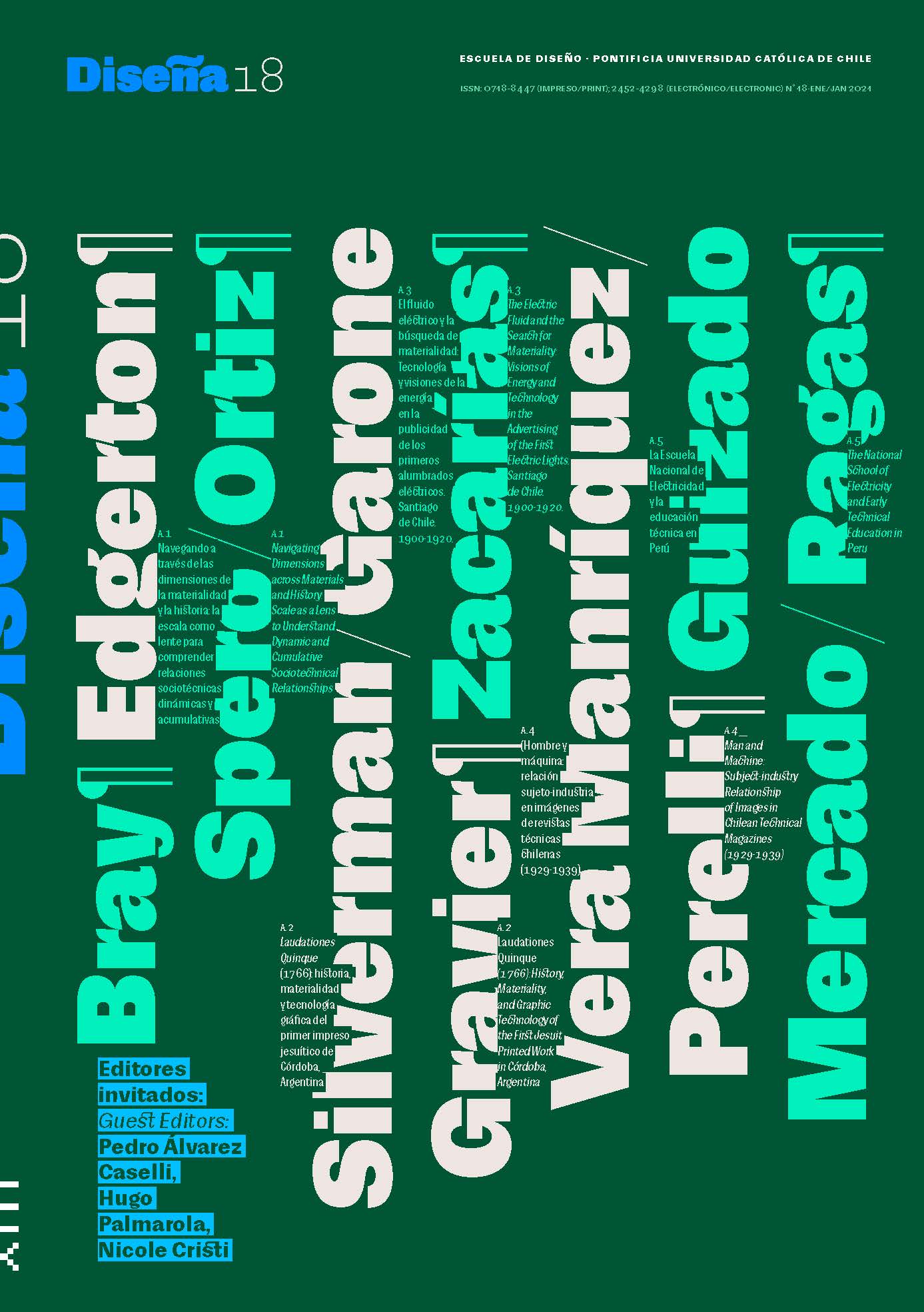Man and Machine: Subject-industry Relationship of Images in Chilean Technical Magazines (1929-1939)
Main Article Content
Abstract
This article is part of a research that addresses the history of design in Chile from the historiographic perspective of cultural history. Such research studies the conceptual art-technique binomial, exploring the artistic and industrial publications in Chile between 1929 and 1939. Using the semiological analysis methodology proposed by Roland Barthes, this article delves into the antecedents of the type of relationship between man and machine established by the images contained in this visual material, to understand how the industrial guilds projected this productive binomial. The theoretical framework is made up by combining Ivan Gaskell’s concept of visual material, Gilbert Simondon’s notion of technical object, and the relationship between design and machine proposed by Wilhem Flusser. As the main conclusion, it is stated that the relationship between man and machine is presented harmoniously and as an ideal of progress, which is expressed both in photographs and illustrations.
Downloads
Article Details

This work is licensed under a Creative Commons Attribution-ShareAlike 4.0 International license.
COPYRIGHT NOTICE
All contents of this electronic edition are distributed under the Creative Commons license of "Attribution-ShareAlike 4.0 Internacional" (CC-BY-SA). Any total or partial reproduction of the material must mention its origin.
The rights of the published images belong to their authors, who grant to Diseña the license for its use. The management of the permits and the authorization of the publication of the images (or of any material) that contains copyright and its consequent rights of reproduction in this publication is the sole responsibility of the authors of the articles.
References
BARTHES, R. (2009). Lo obvio y lo obtuso: Imágenes, gestos, voces. Paidós.
BOOTH, R., & ERRÁZURIZ , T. (2008). Luis Ladrón de Guevara: Hacia una estética de la producción. Revista 180, 22, 34-39. https://doi.org/10.32995/rev180.Num-22. (2008).art-239
CAMPI, I. (2013). La historia y las teorías historiográficas del diseño. Designio.
CASTILLO, E. (2014). EAO La Escuela de Artes y Oficios. Ocho Libros.
CASTILLO, E. (2015). Artesanos, técnicos e ingenieros: La Escuela de Artes y Oficios de Santiago, EAO. Atenea, 511, 247-256. https://doi.org/10.4067/S0718- 04622015000100013
CORWIN, S. (2003). Picturing Efficiency: Precisionism, Scientific Management, and the Effacement of Labor. Representations, 84(1), 139-165. https://doi.org/10.1525/ rep.2003.84.1.139
FLUSSER, V. (2002). Filosofía del diseño: La forma de las cosas. Síntesis.
GASKELL, I. (2014). Historia visual. In P. Burke (Ed.), Formas de hacer historia (pp. 221-254). Alianza.
MCMULLEN, B. (2006). Precisionism: Art in the Industrial Age. Art Education, 59(2), 25- 32. https://doi.org/10.1080/00043125.2006.11651584
MEMORIA CHILENA. (2018). Looping. http://www.memoriachilena.gob.cl/602/w3- article-95932.html
PEVSNER, N. (2011). Pioneros del diseño moderno. De William Morris a Walter Gropius. Infinito.
RAWLINSON, M. (2008). Charles Sheeler: Modernism, Precisionism and the Borders of Abstraction. Bloomsbury.
SIMONDON, G. (2007). El modo de existencia de los objetos técnicos. Prometeo.
VERA, R. (2019). Humberto Díaz-Casanueva y una visión sobre la relación técnica-cultura. RChD: Creación y Pensamiento, 4(6). https://doi.org/10.5354/0719- 837X.2019.51129
VERA, R., HARRIS, R., & BASCUÑÁN , P. (2019). La AEG y la instalación de una visión modernizadora en Chile. Revista 180, 44, 39-51. https://doi.org/10.32995/rev180. num-44.(2019).art-564

